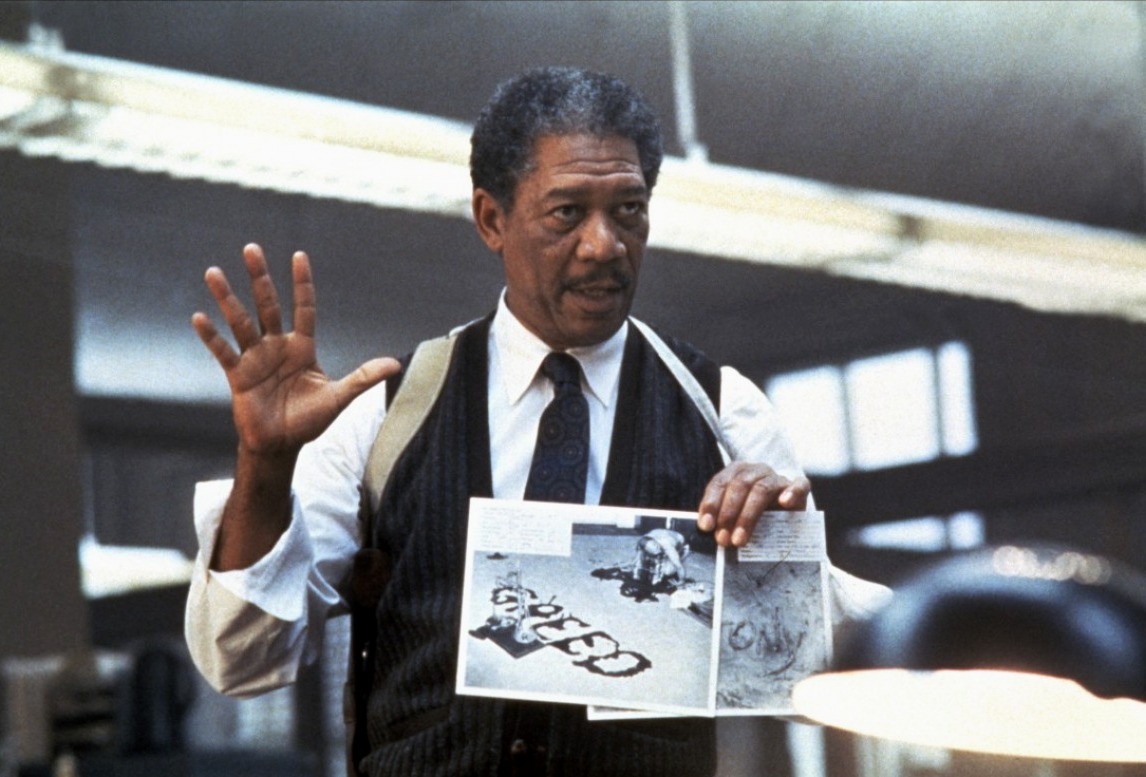
Barry White, the “Maestro” of romantic soul, whose deep baritone voice became synonymous with love and seduction for more than three decades, left an indelible mark on music history. His songs, often characterized by lush orchestrations and his distinctive vocal delivery, resonated with millions, creating an image of an artist deeply in tune with the tender complexities of human connection.
Yet, beneath the charismatic public persona and the velvet voice lay a life marked by profound personal experiences, both triumphs and tribulations, and ultimately, a battle with severe health issues that compounded in his later years. This article aims to explore the multifaceted journey of Barry White, from his challenging formative years to his unparalleled musical achievements and the health struggles that tragically cut his life short at the age of 58.
We delve into the various facets that defined the man behind the music, providing a comprehensive understanding of his life’s trajectory, his artistic evolution, and the significant health decline that led to his passing, offering insights gleaned directly from biographical accounts and journalistic records.
1. **Early Life and Formative Years: From Watts to Inspiration**Barry Eugene Carter, later known as Barry White, was born on September 12, 1944, in Galveston, Texas. His early life was shaped by complex family dynamics, with his mother, Sadie Marie Carter, giving him her last name, which his father, Melvin A. White, later scratched out and replaced with his own on the birth certificate, unknowingly to his mother who was unaware his father was already married.
He spent most of his childhood in the Watts neighborhood of South Central Los Angeles, California, an environment he described as “troubling” and characterized by “gangsterism, drug abuse, burglary, and regular fighting.” This challenging upbringing included a significant turning point when, at the age of 16, White was jailed for four months for stealing $30,000 worth of Cadillac tires.
It was during this period of incarceration that a pivotal moment occurred. While in jail, White listened to Elvis Presley singing “It’s Now or Never” on the radio, an experience he later credited with changing the entire course of his life. This introspection fostered a desire for a different path, away from the troubles that had defined his youth.
Another moment of inspiration struck on his 18th birthday, which coincided with the first day back for his graduating year of high school. White made the unconventional choice to skip class, instead walking to Capitol Records headquarters in Hollywood. He stood across the street, staring for hours, captivated by the liveliness of the area. This profound observation ignited within him the ambition to work in Hollywood’s entertainment industry, despite his initial lack of formal music education.
2. **The Voice That Changed Everything: A Defining Transformation**One of the most remarkable and defining aspects of Barry White’s identity was his extraordinarily deep bass voice, a vocal instrument that became instantly recognizable worldwide. This profound characteristic, however, was not present from birth but emerged dramatically during his adolescence, signaling a pivotal transformation in his young life.
White recalled the sudden shift, stating, “[As a child], I had a normal squeaky kid voice. Then as a teenager, that completely changed. My mother cried because she knew her baby boy had become a man.” This powerful change was not only surprising but also somewhat startling, as he further recounted in a 2000 interview with Conan O’Brien: “I woke up one morning when I was 14. I spoke to my mother, and I scared both of us.”
This unique and powerful voice, which he also told the BBC happened when he was 13, became his undeniable signature. It was the instrument through which he conveyed “songs about all things romantic lovin’ for more than three decades starting in the early 1970s,” making him an enduring figure in soul and R&B music. The rich timbres of his voice were so distinctive that, as one obituary elegantly put it, “If chocolate fudge cake could sing, it would sound like Barry White.”
Indeed, this profound vocal transformation, from a typical adolescent pitch to a resonant, rumbling bass, served as the very foundation of his eventual success. It was the tool that would mesmerize audiences globally and establish his iconic status as the “Ambassador of Romance,” allowing him to speak sensitively to women through his music in a way most men, as he observed, did not think was manly to express.
Read more about: Step Back in Time: Discover the 11 Most Glamorous Old Hollywood Actresses Who Defined an Era of Iconic Style!

3. **Beginnings in Music: Early Groups, Production, and Mentorship**Following his release from jail, Barry White consciously chose to leave gang life behind, embarking instead on a musical career that began in the early 1960s. His initial forays into the music world saw him join singing groups, with his first recorded release being “Too Far to Turn Around” in 1960 as part of the Upfronts.
This early period involved working for various small independent labels across Los Angeles, where he also recorded several singles under his own name. These early solo efforts saw him backed by vocal groups such as the Atlantics for the Rampart and Faro labels, and the Majestics for the Linda and Jordan labels, showcasing his burgeoning talent and versatility.
White’s reputation and capabilities quickly grew within the industry, leading to a significant opportunity in the mid-1960s. Bob Keane of Del-Fi Records hired him as an A&R man for his new Bronco Records imprint. In this role, White’s talents blossomed further as he worked extensively with the label’s artists, including Viola Wills and the Bobby Fuller Four, contributing as a songwriter, session musician, and arranger.
His keen ear and production prowess were evident when he discovered singer Felice Taylor and arranged her song “I Feel Love Comin’ On,” which became a big hit in the UK. White, along with his friend Paul Politi, co-wrote other charting successes for Taylor, including “It May Be Winter Outside (But in My Heart It’s Spring)” and “Under the Influence of Love.” This foundational work as a producer and writer laid essential groundwork for his later, even greater, successes, leading to his signing with Forward Records of Los Angeles as a producer in 1969.

4. **The Genesis of Love Unlimited and its Orchestral Extension**Barry White’s career reached a new zenith in 1972 when he achieved his significant “big break” by producing a girl group he had discovered, named Love Unlimited. This trio, formed in an “imitative style of the Motown girl group the Supremes,” had been diligently honing their talents under White’s guidance for two years before securing a contract with Uni Records.
His friend Paul Politi connected him with music industry businessman Larry Nunes, who provided crucial financial support to produce their debut album. Once recorded, Nunes presented the work to Russ Regan, who was then the head of Uni, a label owned by MCA. The resulting album, 1972’s “From A Girl’s Point of View We Give to You… Love Unlimited,” marked the beginning of White’s signature style of long-titled albums and singles.
White’s creative genius fully shone as he produced, wrote, and arranged their classic soul ballad, “Walkin’ in the Rain with the One I Love.” This track became a massive success, climbing to No. 14 on the Billboard Hot 100 Pop chart and No. 6 on the Billboard R&B chart in late 1972. It was a momentous achievement, becoming White’s first million-selling single as both a writer and a producer, and it also reached No. 12 on the UK chart, notably featuring White’s voice answering the phone call of the female lead.
However, the relationship with Uni soured after Russ Regan departed for 20th Century Records. Capitalizing on this, White successfully transitioned both his production deal and Love Unlimited’s contract to 20th Century Records. Under this new arrangement, the group continued to achieve hits throughout the 1970s, including “I Belong to You,” which spent over five months on the Billboard R&B chart, and “Under the Influence of Love Unlimited,” an album that peaked at No. 3 on the Billboard Pop album charts. This period also saw White marry the group’s lead singer, Glodean James, on July 4, 1974.
In 1973, White expanded his musical vision further by creating The Love Unlimited Orchestra, a formidable 40-piece orchestral group initially conceived as a backing band for Love Unlimited. However, White harbored broader ambitions for the ensemble. Later that year, he released a single featuring “Love’s Theme,” a composition he wrote and the orchestra performed, which surged to No. 1 on the Billboard Pop charts. This established the orchestra as a successful entity in its own right, beyond merely a supporting act.
In 1974, the orchestra released its first album, “Rhapsody in White,” which included the chart-topping “Love’s Theme.” White continued to produce albums with the orchestra, yielding further successes such as “Satin Soul,” “Forever in Love,” “Midnight Groove,” and “My Sweet Summer Suite.” Though the orchestra ceased making albums in 1983, it remained an integral part of White’s musical identity, continuing to support him as a backing band throughout his career.
5. **Launching a Solo Legacy: “I’m Gonna Love You Just a Little More Baby”**Despite his burgeoning success as a producer and songwriter, particularly with Love Unlimited and the Love Unlimited Orchestra, Barry White initially harbored no ambitions of becoming a solo recording artist. His focus was on developing other acts, specifically contemplating working with a solo male artist, rather than stepping into the spotlight himself.
However, destiny, in the form of Larry Nunes, intervened. While White was meticulously crafting a few demos for a prospective male singer, he recorded three song demos of himself singing and playing. Nunes, upon hearing these, was resolute and insisted that White re-record and release them himself as a solo recording artist, convinced of his star power.
White was notably reluctant to embrace this new role, arguing for days against the suggestion. He was initially hesitant to step out from behind the microphone, comfortable in his role as a creative force guiding others. Yet, Nunes’s persistence ultimately prevailed, and White was persuaded to release the songs under his own name.
Following this decision, White immersed himself in writing several additional songs, which he then recorded to form an entire album. He toyed with the idea of using the name “White Heat” for this new venture, but eventually settled on using his given name. His hesitation, however, lingered right up to the very moment the label copy was being finalized, underscoring his initial unease with solo stardom.
The culmination of this effort was White’s first solo album, “I’ve Got So Much to Give,” released in 1973. This landmark album not only featured the evocative title track but also delivered his inaugural solo chart hit, “I’m Gonna Love You Just a Little More Baby.” The single quickly ascended to the top of the Billboard R&B charts, reaching No. 1, and achieved considerable crossover success, peaking at No. 3 on the Billboard Pop charts in 1973, where it remarkably remained in the top 40 for many weeks. This unexpected, yet undeniable, success firmly established Barry White as a compelling solo artist in his own right.
6. **The Golden Era: Chart-Topping Successes of the 1970s**With the launch of his solo career in 1973, the 1970s quickly unfolded as Barry White’s most prolific and successful decade, firmly establishing him as a global music icon. His distinctive sound, characterized by his deep voice, orchestral arrangements, and romantic lyrics, resonated universally, producing a string of chart-topping hits that defined an era of soul and disco.
Following the breakthrough success of “I’m Gonna Love You Just a Little More Baby,” White continued to dominate the airwaves and charts. In 1973, he scored another hit with “Never, Never Gonna Give You Up,” reaching No. 2 on the R&B charts and No. 7 on the Pop charts. This momentum built rapidly, setting the stage for even greater achievements.
1974 proved to be an extraordinary year for White. He released two of his most enduring classics, both achieving remarkable success across multiple charts: “Can’t Get Enough of Your Love, Babe” soared to No. 1 on both the Pop and R&B charts, followed by “You’re the First, the Last, My Everything,” which also hit No. 1 on the R&B charts and No. 2 on the Pop charts. The latter also earned him a No. 1 spot in the UK, underscoring his international appeal.
His album “Can’t Get Enough,” released in the same year, ascended to the top of the pop charts, firmly cementing his status as a leading musical force. The hit parade continued with “What Am I Gonna Do with You” reaching No. 1 R&B and No. 8 Pop in 1975, and “Let the Music Play” hitting No. 4 R&B in 1976.
White’s consistent success further manifested with “It’s Ecstasy When You Lay Down Next to Me,” which topped the R&B charts at No. 1 and reached No. 4 Pop in 1977, and “Your Sweetness Is My Weakness” hitting No. 2 R&B in 1978. These achievements solidified his reputation as an artist who consistently delivered powerful, emotionally charged music. His worldwide record sales ultimately exceeded 100 million, securing his place as one of the best-selling music artists of all time.

7. **Beyond the Music: Acting, Voice-Overs, and Public Persona**Barry White’s distinctive baritone voice and charismatic public image were not confined solely to the realm of music; they also extended into successful ventures in acting and voice-over work, allowing him to connect with audiences through various media. His unique vocal qualities and larger-than-life presence made him a natural fit for these roles.
Early in his career, White lent his voice to the character Brother Bear in the 1975 film “Coonskin.” Later, in the 1990s, he famously voiced himself in two episodes of the acclaimed animated television series “The Simpsons,” specifically in “Whacking Day” and “Krusty Gets Kancelled,” bringing his iconic sound to a new generation of fans.
Beyond animation, White was a familiar voice in the commercial landscape. In 1995, he appeared as a bus driver for a Prodigy commercial, and he also provided the voice of a rabbit in a Good Seasons salad-dressing-mix commercial, singing a memorable jingle titled “You Can’t Bottle Love.” His voice became sought after for its authoritative yet smooth quality, leading to work for car commercials, including Oldsmobile and later Jeep, as well as for Arby’s Restaurant, promoting their Market Fresh menu.
His voice even graced the world of technology, being featured in Apple’s first iBook commercial. Furthermore, White made three memorable guest appearances on the popular comedy-drama television series “Ally McBeal,” where his music was often integrated into dream sequences, cementing his cultural presence beyond the concert stage. His physical attributes, characterized by his “large frame, facial hair, and deep voice,” contributed to his affectionate nicknames such as “The Walrus of Love” in the UK, and in the US, “Dr. Love,” “Mr. Love,” “Prince of Pillow Talk,” “Ambassador of Romance,” “King of Disco,” “The Maestro,” or “Guru of Love.”
Despite not conforming to the entertainment industry’s conventional idea of a sex symbol, White possessed an undeniable allure and “knew how to strike a chord with fans.” He often spoke about his music telling “real stories of love and dealt with sex on an emotional level,” reflecting his deeply serious nature, his commitment to civil rights causes, and his preference for facts over unproven stories, as he shared his skepticism of religion in a 1999 Reuters interview. His multifaceted career and distinct persona made him a truly singular figure in popular culture.

8. **Personal Relationships: Love, Marriage, and Family Dynamics**Barry White’s prolific career as the ‘Ambassador of Romance’ was deeply intertwined with his personal life, which included two marriages and a complex family structure. His perspective on love, as articulated in a 1995 interview with Rolling Stone, was particularly notable: he believed it was ‘better to love than to fall in love,’ viewing the latter as a loss of contact with reality that could lead to negative emotions like jealousy. This philosophy, he stated, informed his approach to relationships, where he aimed to love as honestly and strongly as possible without ‘falling’ into an all-consuming state.
White’s first marriage was to his childhood sweetheart, identified only as ‘Mary’ in his autobiography. By the age of 16, White had already fathered two children with her. They eventually had four children together before separating in 1969 and subsequently divorcing. These early experiences undoubtedly provided a rich backdrop for the themes of love and intimacy that permeated his musical catalog.
His second marriage was to Glodean James, the lead singer of Love Unlimited, the girl group he discovered and produced. They married on July 4, 1974, a union that also led to a musical collaboration on the 1981 album *Barry & Glodean*. The couple had four children together, and while they reportedly separated in 1988 and lived separate lives for over a decade, they remained legally married until White’s death in 2003. This enduring marital status would later play a significant role in the administration of his estate.
Beyond his two marriages, White also had a daughter, Denise Donnell, born in 1962 to Gurtha Allen, who did not discover White was her biological father until 1988. White accepted her, and with his help, she changed her name to Denise White. Additionally, following White’s death, his girlfriend Katherine Denton claimed her infant daughter, Barriana, was his biological child, but paternity tests later disproved this claim. White had at least nine children in total, contributing to a substantial and sometimes complicated family life that paralleled his public image.
Read more about: Unpacking Leo’s Law: The Fascinating Reasons Why Leonardo DiCaprio Only Dates Supermodels Under 26

9. **Challenges of the Later Career: Navigating the Post-Disco Era and Financial Pressures**The vibrant disco era, which Barry White had significantly helped to define, eventually receded, bringing new challenges to his career in the 1980s. While he maintained a loyal following, his commercial success on the pop charts began to wane. After leaving 20th Century Records in 1979, White launched his own label, Unlimited Gold, in partnership with CBS/Columbia Records, demonstrating his business acumen and desire for artistic control.
Despite releasing several albums over the next three years, including *Sheet Music* (1980), *Barry & Glodean* (1981) with Glodean White, *Beware!* (1981), and *Change* (1982), he struggled to replicate his earlier chart dominance. Only the single ‘Change’ from 1982 managed to reach the Billboard R&B Top 20, peaking at No. 12, while no singles entered the Billboard Hot 100 during this period. The financial strain of operating his own label proved to be considerable.
The heavy financial cost associated with Unlimited Gold eventually led White to concentrate primarily on touring, and he ultimately folded the label in 1983. This marked a significant shift in his career trajectory, as he stepped away from the spotlight of consistent chart presence to focus on live performances and rebuilding his professional foundation. After a four-year hiatus from recording, he signed with A&M Records.
His new chapter with A&M began with the release of *The Right Night & Barry White* in 1987, which produced the single ‘Sho’ You Right,’ peaking at No. 17 on the Billboard R&B charts. In 1989, he followed up with *The Man Is Back!*, yielding three top 40 singles on the Billboard R&B charts: ‘Super Lover’ (No. 34), ‘I Wanna Do It Good to Ya’ (No. 26), and ‘When Will I See You Again’ (No. 32). These releases signaled a slow but steady resurgence, setting the stage for his powerful comeback in the next decade.
10. **Significant Personal Tragedies: The Profound Loss of His Brother**Beyond the public triumphs and professional challenges, Barry White’s life was also marked by profound personal tragedy. One of the most devastating events he endured was the loss of his younger brother, Darryl. This deeply painful experience occurred in 1983, a year that also saw White navigating the financial difficulties of his independent record label.
Darryl White, who was 13 months younger than Barry, died after suffering a gunshot wound. The incident stemmed from a disagreement with a neighbor over a mere $20 bill, highlighting the senseless violence that could abruptly shatter lives. This personal catastrophe resonated deeply with White, who had grown up in the challenging Watts neighborhood of South Central Los Angeles, an environment he himself described as characterized by ‘gangsterism, drug abuse, burglary, and regular fighting.’
In his autobiography, *Love Unlimited*, White reflected on his brother’s death and expressed a somber realization: he believed that music had likely spared him a similar fate. His pivot from a troubled youth to a dedicated musical career after a period of incarceration had provided him with an alternative path, one that his brother tragically did not follow to the same extent. This loss underscored the fragility of life and the lasting impact of his early environment, even as he achieved global fame.
The memory of Darryl’s death served as a poignant reminder of the darker realities that existed beneath the glamorous surface of his musical empire. It further highlighted the depth of character and resilience required for White to overcome such personal adversity while continuing to craft music that spoke of love, joy, and emotional connection, maintaining his powerful presence as the ‘Maestro’ of romantic soul.
Read more about: Beyond the Limelight: How 13 Stars Navigated the Unspeakable Tragedy of a Family Member’s Murder

11. **The Powerful 1990s Comeback and Grammy Achievements**The 1990s witnessed a remarkable resurgence in Barry White’s career, fueled in part by a wave of 1970s nostalgia and a renewed appreciation for his distinctive sound. This decade marked a powerful comeback, solidifying his status as an enduring icon whose influence transcended generations and genres. His participation in Quincy Jones’s 1989 album *Back on the Block*, specifically on the song ‘The Secret Garden (Sweet Seduction Suite),’ helped to bridge the gap between his classic sound and contemporary audiences.
White effectively mounted his comeback with a series of increasingly successful albums. In 1991, *Put Me in Your Mix* reached No. 8 on the Billboard R&B Albums chart, with its title track becoming a significant hit, peaking at No. 2 on the Billboard R&B singles chart. This success signaled that White’s unique blend of lush orchestrations and seductive vocals still resonated strongly with the public.
The momentum continued to build, culminating in 1994 with the release of *The Icon Is Love*. This album soared to No. 1 on the Billboard R&B album charts, marking a pivotal moment in his resurgence. The lead single, ‘Practice What You Preach,’ gave White his first No. 1 on the Billboard R&B singles chart in nearly two decades, confirming his return to the pinnacle of popular music. The album’s critical and commercial success earned it a Grammy nomination in the Best R&B Album category, although it ultimately lost to TLC’s *CrazySexyCool*.
His artistic endeavors in the 1990s extended beyond solo albums. In 1996, White recorded the duet ‘In Your Wildest Dreams’ with Tina Turner and contributed to the *Space Jam* soundtrack with a duet alongside Chris Rock, a remake of ‘Basketball Jones.’ His final album, *Staying Power*, released in 1999, cemented his comeback with the hit song ‘Staying Power,’ which reached No. 45 on the Billboard R&B charts. This album brought him his first two Grammy Awards at the 42nd Annual Grammy Awards in 2000, winning in the categories of Best Male R&B Vocal Performance and Best Traditional R&B Vocal Performance, a belated but well-deserved recognition for his unparalleled artistry. He had previously boycotted the Grammys, frustrated after losing Best New Artist to Bette Midler in 1974, making these wins particularly meaningful.
Read more about: From Crossroads to Comebacks: 10 Actors Who Redefined Stardom on Their A-List Journey
12. **The Long History of Severe Health Problems**Beneath the captivating stage presence and the seemingly effortless delivery of his romantic ballads, Barry White grappled with severe and compounding health problems for many years, particularly in the latter part of his life. These issues ultimately contributed to his untimely passing at the age of 58. A significant factor in his declining health was his lifelong struggle with weight; he was overweight for most of his adult life, reportedly weighing up to 375 pounds.
The consequences of this began to manifest in the mid-1990s. In 1995, White was hospitalized due to high blood pressure, a condition that would plague him for the remainder of his life. This hospitalization served as an early warning sign of the deep-seated health challenges he faced. The demands of touring and his rigorous schedule exacerbated these issues, leading to further complications.
In 1999, White was forced to cancel seven concerts during a tour with Earth, Wind and Fire, citing exhaustion. This public acknowledgment of his declining energy levels hinted at the deeper struggles he was experiencing behind the scenes. The cumulative effects of his weight, high blood pressure, and a demanding career were taking a significant toll on his body, leading to more critical diagnoses in the early 2000s.
The situation escalated dramatically in September 2002 when White was admitted to the hospital for kidney failure. According to medical reports, this severe condition was directly related to his long-standing high blood pressure and chronic type 2 diabetes, a form of diabetes that typically develops in adulthood. The intertwining nature of these conditions created a complex and increasingly perilous health crisis, setting the stage for the final tragic events of his life.
Read more about: Anna Nicole Smith: Unraveling the Tragic Saga of a Hollywood Icon’s Rise and Fall
13. **The Direct Events Leading to His Passing**The final months of Barry White’s life were marked by an intense and ultimately losing battle with severe health complications that brought his vibrant career to a somber close. After being hospitalized in September 2002 for kidney failure, a condition stemming from his chronic high blood pressure and type 2 diabetes, White was in urgent need of a kidney transplant. While awaiting a suitable donor match, he underwent arduous dialysis treatments to manage his deteriorating renal function.
The hope for a transplant was tragically dashed by further health setbacks. In May 2003, while still undergoing dialysis, White suffered a severe stroke. This debilitating event forced him to retire from public life entirely, as his condition rendered him almost completely incapacitated. The stroke was a critical turning point, significantly weakening his body and making any potential transplant surgery impossible due to his unstable health.
In the weeks leading up to his death, White’s condition continued to worsen, as he suffered multiple seizures. These seizures were a further indication of the severe neurological and systemic distress his body was enduring. Despite his manager, Ned Shankman, reporting that White was ‘aware of his condition and was in good spirits’ just hours before his passing, the accumulation of his illnesses proved insurmountable. Don Cornelius, who visited White in the hospital, noted that the singer ‘really suffered’ and was ‘full of tubes,’ marveling at his abnormal strength to have held on for so long.
Barry White ultimately died on July 4, 2003, at Cedars-Sinai Medical Center in Los Angeles. The direct cause of death was kidney failure, compounded by his long history of high blood pressure, chronic diabetes, and the severe stroke he had suffered. He was 58 years old. His passing marked the end of an era for soul music, leaving behind a legacy of romantic ballads and a poignant story of resilience against formidable personal and health challenges.
Read more about: Prince William and Princess Kate’s Landmark Move: Unpacking the Royal Residence Shift, Family Dynamics, and King Charles’ Reported Discontent

14. **The Complexities of His Estate and Lasting Posthumous Recognition**Following Barry White’s death on July 4, 2003, at the age of 58, his legacy extended beyond his music into the complex realm of his personal estate, which was estimated at $20 million by Celebrity Net Worth. The immediate aftermath of his passing was unfortunately marred by disputes among his children and female partners over the rights to his assets. This situation arose partly because White’s will had not been updated for several years prior to his death, leading to ambiguities and legal challenges.
As his legally recognized widow, Glodean James, though estranged from White for over a decade, was made the sole executor of his estate. This arrangement faced challenges from various family members. In 2017, his son Darryl White, from his first marriage, sued the estate, claiming he had been cut off financially. Similarly, in 2016, his daughter Denise White, whose paternity he had accepted, also sued the estate after she stopped receiving money. The claims by his girlfriend Katherine Denton, asserting her infant daughter Barriana was his biological child and that she was owed money, were dismissed after paternity tests disproved her claims.
Despite these legal entanglements, White’s artistic legacy continued to receive significant posthumous recognition. On September 20, 2004, he was inducted into the Dance Music Hall of Fame in New York, celebrating his pivotal role in shaping disco and soul music. His enduring cultural impact was further honored on September 12, 2013, what would have been his 69th birthday, when he was posthumously awarded the 2,506th star on the Hollywood Walk of Fame in the recording category, located at 6914 Hollywood Boulevard.
Further tributes included the television show *Counting Cars*, which restored the last car he owned for his widow, Glodean. Reverential obituaries lauded his unique vocal quality, with the BBC famously stating, ‘If chocolate fudge cake could sing, it would sound like Barry White.’ In 2023, Rolling Stone magazine ranked White at number 56 on its prestigious list of the 200 Greatest Singers of All Time, solidifying his place among music’s most influential and cherished voices. Barry White may be gone, but his profound influence on music, culture, and the art of romance continues to resonate, securing his place as an unparalleled musical genius for generations to come.
Read more about: The Indelible Reign of Prince: A Forbes Retrospective on the Musical Genius, Financial Acumen, and Cultural Impact of an Icon
Barry White’s journey was a testament to the power of transformation, resilience, and the enduring magic of a voice that spoke universally to the human heart. From a challenging upbringing in Watts to international stardom, he crafted a sound that was uniquely his own, one that transcended genres and generations. His struggles with health and personal tragedies underscore the depth of the man behind the music, adding layers of complexity to the ‘Maestro’ of romance. Yet, through it all, his unmistakable baritone and timeless orchestrations continue to define an era, cementing his legacy as an artist whose profound impact will forever echo in the annals of music history.









